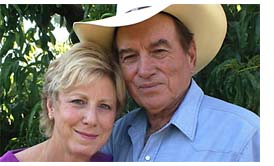Old Style Custom Meat Market
- By Reed Adam
- Reading Time: 3 mins.
By Reed Adam, Capay Valley Farm Shop
 At first glance, the almost-completed Manas Ranch Old Style Custom Meat Market, located on Highway 16 just east of Esparto, appears identical to the packing houses and storage sheds that dot this rich agricultural landscape near Yolo County’s Capay Valley. Only the sign, which adorns the front of the building’s entryway on the side of the highway, hints that this place is something altogether different.
At first glance, the almost-completed Manas Ranch Old Style Custom Meat Market, located on Highway 16 just east of Esparto, appears identical to the packing houses and storage sheds that dot this rich agricultural landscape near Yolo County’s Capay Valley. Only the sign, which adorns the front of the building’s entryway on the side of the highway, hints that this place is something altogether different.

The Manas Ranch Old Style Custom Meat Market is the end result of years of hard work by many, but especially its’ owners, Fred and Alice Manas. Fred Manas is a descendant of a cattle ranching and farming family originally from Spain that settled in Western Yolo County in the late 19th Century. Today, the Manas family raises beef on nearly 2000 acres in Napa and Yolo Counties and peaches in an orchard just outside Esparto. For years, the Manases and many other small meat producers have noted the lack of a processing facility in Yolo County: farmers raising cattle or pork must take their animals to a facility near Orland for slaughtering and processing. To fill this need, Fred and Alice began working over seven years ago to design and construct a facility near Esparto. With the expertise of Jim Holt, who ran the meat lab at CSU Chico for thirty years, this dream slowly became a reality.
Want farm-fresh fruit?
We've got you covered.
A tour of the interior of the Manas Ranch Old Style Custom Meat Market provides an insight into the passion and dedication of its owners and the complexity of processing meat according to the regulations of the U.S. Department of Agriculture. The Meat Market is a processing facility only, which means that the animals must already be slaughtered and cleaned before entry. According to owner Fred Manas: “everything comes in clean, if it’s not clean, it doesn’t come in.” This applies to everyone, whether it be a hunter bringing in a freshly killed deer or a small farmer who raises pastured pork nearby in the Capay Valley. Upon entry, all meat immediately receives a bar code that contains information about its’ origin as well as specifics about how it should be processed. Depending on the type of meat, the animal will remain in a refrigerated room for up to a month before entering the cut room. After the meat is cut, it can either be wrapped and sold, or put into either a state of the art smoker, marinade tumbler, or, if the desired result is sausage or salami, a dry cure room for up to 100 days. In order to comply with USDA regulations, the temperature of the meat must be recorded throughout the entire process. The Manases have installed a sophisticated temperature management system that turns off and on coolers as they are needed, instead of running them constantly, which will save on energy costs. Foaming sanitizer dispensers installed in many of the doorways of the facility ensure that bacteria will not be transferred from room to room on the boots of the employees.
Initially, the Manases will employ three people at the Meat Market, but as business picks up, they hope to have six workers by the fall. Judging from the attendance at the producers’ tour, whose participants traveled from as far away as Alturas in Modoc County in far Northeastern California to visit the facility, the Manases anticipate brisk business from the greater Northern California region. The Old Style Custom Meat Market is an important stop in the complex path that meat produced on small farms must follow from pasture to fork. It is a state of the art facility that will assure that the meat sold to the customer will be of the highest quality. For those who plan to visit the Meat Market, the Manases will begin selling meat and deli sandwiches from the facility starting this summer, offering passer-byes the opportunity to taste the difference in small farm and sustainably produced meat.


